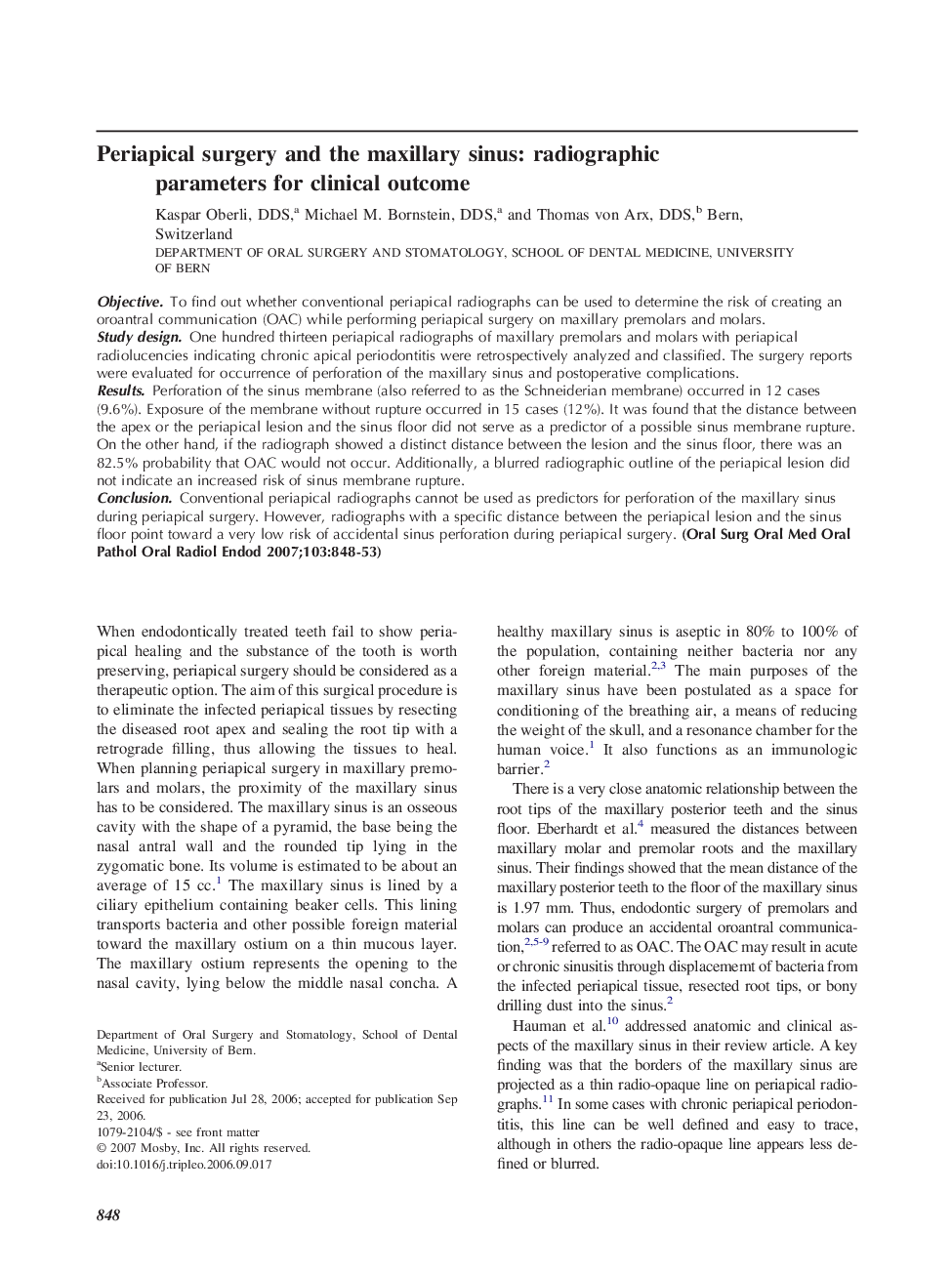| Article ID | Journal | Published Year | Pages | File Type |
|---|---|---|---|---|
| 3169388 | Oral Surgery, Oral Medicine, Oral Pathology, Oral Radiology, and Endodontology | 2007 | 6 Pages |
ObjectiveTo find out whether conventional periapical radiographs can be used to determine the risk of creating an oroantral communication (OAC) while performing periapical surgery on maxillary premolars and molars.Study designOne hundred thirteen periapical radiographs of maxillary premolars and molars with periapical radiolucencies indicating chronic apical periodontitis were retrospectively analyzed and classified. The surgery reports were evaluated for occurrence of perforation of the maxillary sinus and postoperative complications.ResultsPerforation of the sinus membrane (also referred to as the Schneiderian membrane) occurred in 12 cases (9.6%). Exposure of the membrane without rupture occurred in 15 cases (12%). It was found that the distance between the apex or the periapical lesion and the sinus floor did not serve as a predictor of a possible sinus membrane rupture. On the other hand, if the radiograph showed a distinct distance between the lesion and the sinus floor, there was an 82.5% probability that OAC would not occur. Additionally, a blurred radiographic outline of the periapical lesion did not indicate an increased risk of sinus membrane rupture.ConclusionConventional periapical radiographs cannot be used as predictors for perforation of the maxillary sinus during periapical surgery. However, radiographs with a specific distance between the periapical lesion and the sinus floor point toward a very low risk of accidental sinus perforation during periapical surgery.
